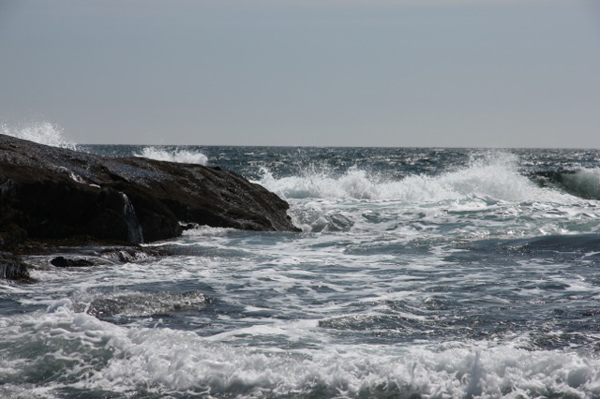Despite advances made in the fields of DNA sequencing and analysis, researchers have barely begun to scratch the tip of the iceberg in cataloging the planet’s microbial diversity, mainly because only a minute fraction of the millions of species of microbes have been cultured in the laboratory. In marine as well as terrestrial environments, the microbes that can be cultured in the lab do not accurately represent the diversity found in the wild, severely limiting our understanding of why microbes are found where they are and what they are doing there.
Among the challenges in cultivating microbes is a process known as genome streamlining—over time, some microbes have pared down their genetic codes to those genes necessary to survive in specific nutrient-poor environments. A marine microbial study published in the June 25, 2013 early edition of the Proceedings of the National Academy of Sciences suggests that as finicky as lab-cultured microbes are known to be, free-living microbes are even more so.
The researchers, including those from the U.S. Department of Energy Joint Genome Institute (DOE JGI) and the Bigelow Laboratory for Ocean Sciences in Maine, isolated single microbial cells from samples collected in the Gulf of Maine, Mediterranean Sea, North Pacific and South Atlantic. The team then sequenced and assembled draft genomes of 56 single amplified genomes (SAGs). “Using this large-scale single-cell strategy, our study provides the first glimpse into the geographic distribution and genomic features of some of the bacterial inhabitants, most of which have not yet been cultivated in the laboratory,” said Tanja Woyke, the head of the DOE JGI Microbial Genomics Program and one of the senior authors of the PNAS study. In the study exploring the role that marine bacteria play in managing the carbon in the oceans, water samples were taken from the ocean photic zone, or ‘sunlight zone,’ the region within the vast oceans of our planet that is penetrated by sufficient sunlight to allow for photosynthesis. “This is where most of the sun’s energy is captured in the ocean,” said Woyke. The SAGs were then compared with existing microbial cultures and metagenomic datasets. The team found evidence that unlike the free-living microbes, the cultured microbes thrive in more nutrient-rich environments. “These findings illustrate that bacterial adaptations to nutrient-poor environments are widespread and that dispersal is not limited, but rather water temperature and latitude are key drivers in geographic distribution of certain bacterial groups,” Woyke said. “To put it in other words – bacteria from the sunlight zone can travel large distances, but they then like to settle and thrive in regions of shared temperature and latitude.”

Photo: Ramunas Stepanauskas, director of the Bigelow Laboratory Single Cell Genomics Center,
is one of the senior authors of the study. (Richard G. Sandifer)
“Single-cell genomics continues to push research to a new level, previously inaccessible to scientists,” said Ramunas Stepanauskas, director of the Bigelow Laboratory Single Cell Genomics Center and senior author of this study. “While other cultivation-independent tools are available, these rarely allow us to assess who in a community does what, a central question in microbial ecology. The single-cell sequencing approach allowed us to link an organism’s identity and functional gene repertoire for more than fifty key community members of the ocean photic zone, shedding light on the biology of this ecosystem that covers 70% of the planet.”
